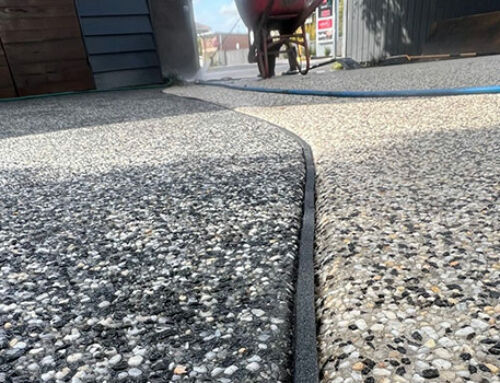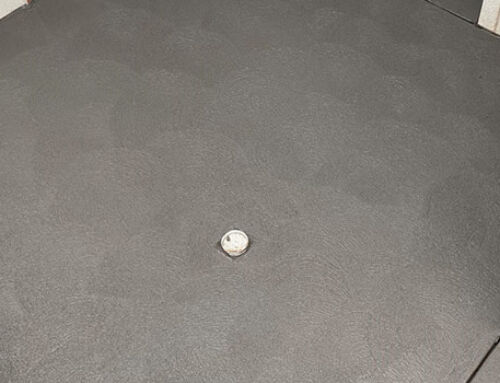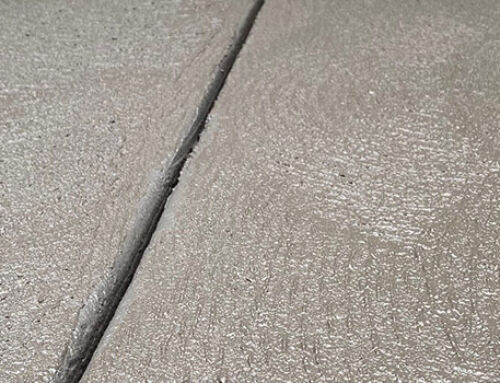Are you looking for ways to transform your outdoor space?
Coloured concrete, once a novelty, is now a growing trend in Melbourne’s construction and design scene. It’s not just about aesthetics; this versatile material is reshaping how we view functionality and design in urban spaces.
But is it right for you? Will it match your current home decor? And what will it cost?
In this guide, we’ll answer those questions (and more) by covering:
- A short overview of coloured concrete
- The advantages and limitations of colours in concrete
- Coloured surface vs. common alternatives
From sleek, modern driveways to eye-catching patios, this type of concrete is making its mark.
But, like any building material, it comes with its own set of pros and cons.
Whether you’re a homeowner planning a renovation or just curious about this colourful concrete finish, this article has got you covered.
COLOURED CONCRETE OVERVIEW
|
What is Coloured Concrete?
It is much more than your average building material. It’s a fusion of art and engineering, a blend that brings both aesthetic appeal and practicality to the table.
At its core,it is regular concrete infused with pigments, offering a spectrum of colours that can transform any space.
Traditionally, concrete has been viewed as a purely functional material – sturdy, and reliable, but hardly exciting.
It changes this narrative, allowing architects, builders, homeowners and commercial properties to express creativity and individuality in their projects.
The process of creating concrete with colour involves adding iron oxide pigments to the concrete mix. These pigments, which are UV-stable and resistant to fading, are available in a wide range of colours.
From earthy reds and browns that blend seamlessly with the Australian landscape, to bold blues and greens that make a statement, the possibilities are endless.
The texture and finish can also be customised. Options range from smooth and polished to exposed aggregate, offering different levels of slip resistance and visual appeal.
Pros of Coloured Concrete
Durability and Longevity
Concrete is renowned for its strength and longevity, and the addition of colour does not compromise these qualities.
The iron oxide pigments used are known for their resistance to fading and weathering. In Melbourne’s varied climate, this is particularly advantageous.
Studies show that these surfaces can maintain their vibrancy and structural integrity for decades with minimal maintenance.
Low Maintenance
Unlike other decorative paving materials, this type of concrete doesn’t require regular sealing or intensive cleaning. A simple sweep and occasional wash will keep it looking pristine.
This ease of maintenance is a boon for busy homeowners and commercial property managers alike, saving both time and money in the long term.
Design Flexibility
With a wide palette of colours available, it allows for unparalleled customisation. You can match it to your home’s exterior, your business’s branding, or even the natural landscape.
Beyond colour, the textural possibilities add another layer of customisation. Whether you prefer a smooth, polished finish or a rugged, exposed aggregate, this type of concrete can be tailored to suit any aesthetic.
Increased Property Value
Properties with well-designed, visually appealing exteriors tend to fetch higher prices in the real estate market.
A unique and stylish driveway or patio can be a major selling point.
Eco-Friendly Options
In recent years, there’s been a push towards more sustainable building materials, and this type of concrete is stepping up to the challenge.
Some suppliers now offer eco-friendly pigment options, such as those derived from natural earth oxides. Additionally, longevity means less frequent replacement, reducing waste and resource consumption over time.
Safety and Accessibility
It can also enhance safety and accessibility. Textured finishes provide slip resistance, a crucial feature in public spaces and home environments alike.
This makes it a practical choice for areas like pool surrounds, walkways, and outdoor living spaces, especially in Melbourne’s occasionally wet weather.
Limitations of Coloured Concrete
Higher Initial Cost
The addition of pigments and the specialised process involved in its installation often make it more expensive than standard concrete.
On average, it can cost anywhere from 10% to 30% more than its plain counterpart. This initial investment might be a significant factor for budget-conscious homeowners or builders.
Colour Inconsistencies
Achieving uniform colour can be challenging. Variations in the mix, pigment quality, and application techniques can result in slight inconsistencies in colour.
This can be particularly noticeable over large areas. In some cases, exposure to extreme weather conditions in Melbourne, like prolonged sun or heavy rain, might accentuate these inconsistencies over time.
Repair and Matching Issues
In the event of damage or wear, repair can be difficult. Matching the original colour precisely is often challenging, leading to visible patchwork.
This is especially true for colours that have faded or changed over time.
The repair process not only adds to the cost but can also affect the overall aesthetic of the space.
Limited Colour Fading Resistance
Despite advances in pigment technology, some degree of colour fading is inevitable, particularly in areas with high UV exposure.
Over the years, the vibrant hues may dull slightly, requiring resealing or recolouring to restore their original brightness. This maintenance aspect is an important consideration for long-term planning.
Complexity in Installation
The installation is more complex than that of standard concrete. It requires skilled professionals with specific knowledge of colour mixing and application techniques.
Finding the right contractor can be a challenge, and the skill level of the installer can greatly influence the outcome.
How Coloured Concrete Compares with Other Options
Coloured vs. Standard Concrete
Standard concrete, the classic choice, is known for its durability and cost-effectiveness. However, it lacks the aesthetic appeal of concrete with colour.
While standard concrete offers a classic grey finish, concrete with colour provides a wide range of hues, enabling more creative freedom in design.
This makes it a superior choice for projects where visual appeal is as important as functionality.
Coloured Concrete vs. Natural Stone Paving
Natural stone paving, such as bluestone or sandstone, is a premium choice known for its unique textures and natural beauty.
However, it often comes with a higher price tag and requires more maintenance.
Natural stone can be prone to staining and may need regular sealing. Concrete with colour, on the other hand, offers a similar aesthetic diversity at a more affordable price and with lower maintenance needs.
Coloured Concrete vs. Brick Paving
Brick paving offers a traditional and rustic look, but its colour options are generally limited to the natural hues of clay. Additionally, bricks can shift or sink over time, requiring more upkeep.
Concrete with colour provides a more stable and long-lasting surface with a broader colour palette, making it a more versatile and low-maintenance alternative.
Coloured Concrete vs. Asphalt
Asphalt is another common choice for driveways and paths, known for its durability and lower initial cost. However, asphalt lacks the aesthetic options.
It’s typically available only in black, and while it’s practical for large areas like parking lots, it doesn’t offer the same design flexibility or visual impact.
Coloured vs. Stamped Concrete
Stamped concrete offers texture and pattern options by imprinting designs on the surface.
While stamped concrete can mimic materials like stone, brick, or wood, it may not provide the same depth and range of colour options.
Concrete with colour excels in delivering vibrant, uniform hues that can be tailored to any design vision.
Coloured vs. Exposed Aggregate Concrete
Exposed aggregate is a form of concrete where the top layer is washed away to reveal the aggregates (like stones and pebbles) within. While it offers a unique texture and finish, its colour range is limited to the aggregates used.
Concrete with colour, with its vast colour options, provides a more consistent and customisable aesthetic.
Concrete with colour stands out in Melbourne’s construction market with its unique blend of durability, low maintenance, design flexibility, and broad colour spectrum.
While other materials have their merits, this type of concrete offers a balance of practicality and aesthetic appeal that’s hard to match.
The Final Mix: Summing Up Coloured Concrete
Let’s cement the key takeaways:
- Durability and Longevity: It is as sturdy and long-lasting as traditional concrete, with added aesthetic value.
- Maintenance: It requires minimal upkeep compared to other decorative surfaces, making it cost-effective in the long run.
- Design Flexibility: Offers a wide range of colours and textures, allowing for unique and personalised design options.
- Property Value: Can enhance the appeal and value of a property with its stylish appearance.
- Eco-Friendly Options: The availability of sustainable pigment choices aligns with environmentally conscious building practices.
- Safety Features: Slip-resistant textures can be incorporated for safer surfaces, especially in wet conditions.
- Cost Considerations: Initially more expensive than standard concrete, but offers greater value in terms of aesthetics and maintenance.
- Colour Consistency and Repair: Potential for colour inconsistencies and challenges in matching colours for repairs.
- Comparison with Other Materials: Offers a balance between aesthetics and functionality, unlike other materials like natural stone, brick, or asphalt.
If you want to learn more, check out our other resources:
Contact Concept Concrete today for Your Next Project
If you’re intrigued by the potential of concrete with colour or have more questions, Concept Concrete is here to help.
- Interested in exploring concreting options for your property?
- Looking for expert advice tailored to your specific needs?
- Ready to get a quote for your next project?
Don’t hesitate to reach out. Our team of experienced professionals is passionate about bringing your vision to life.
We’re here to provide personalised advice, answer your queries, and guide you through every step of the process.
Contact Concept Concrete today to get an obligation-free quote now.



![How to Choose the Best Coloured Concrete Contractor in Melbourne [Tips and Advice]](https://conceptconcrete.com.au/wp-content/uploads/2023/04/How-to-choose-the-best-coloured-concrete-contractor-in-Melbourne-500x383.jpg)


![How To Colour Concrete [Five Different Methods Explained]](https://conceptconcrete.com.au/wp-content/uploads/2022/02/How-To-Colour-Concrete-500x383.jpg)